In the avian world, courtship rituals transcend mere reproduction—they showcase nature’s most spectacular performances. Birds employ elaborate dances to demonstrate fitness, genetic quality, and territorial prowess to potential mates. These performances range from subtle wing displays to complex choreographed routines that can span days. Some species have evolved such specialized courtship behaviors that their survival depends on the perfect execution of these dances. Let’s explore fourteen bird species whose remarkable courtship displays exemplify nature’s artistic flair, demonstrating how evolution has shaped these mesmerizing performances that continue to captivate both mates and human observers alike.
Greater Bird-of-Paradise The Mystical Shape-Shifter
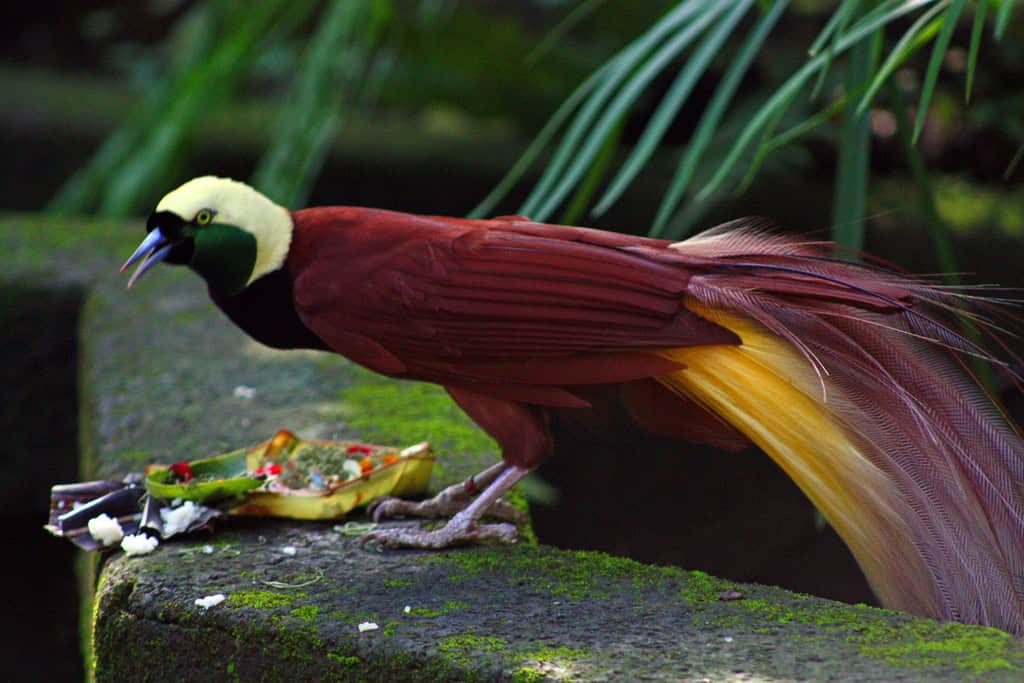
The Greater Bird-of-Paradise (Paradisaea apoda) transforms into a supernatural entity during courtship. Native to the rainforests of New Guinea, males gather at traditional dancing sites called leks, where they meticulously clean branches before beginning their performance. The male’s dance is a multisensory marvel—he spreads his elongated yellow and white flank plumes into a magnificent oval fan, resembling a golden halo. While displaying, he bounces rhythmically on his perch, contorting his body while producing harsh, mechanical calls. The most remarkable aspect occurs when he hangs upside down, creating an otherworldly silhouette that appears to change shape with each movement. Researchers have documented that females may observe these performances for weeks before selecting a mate, choosing only males who demonstrate perfect coordination and stamina.
Western Grebe The Synchronized Water Ballet
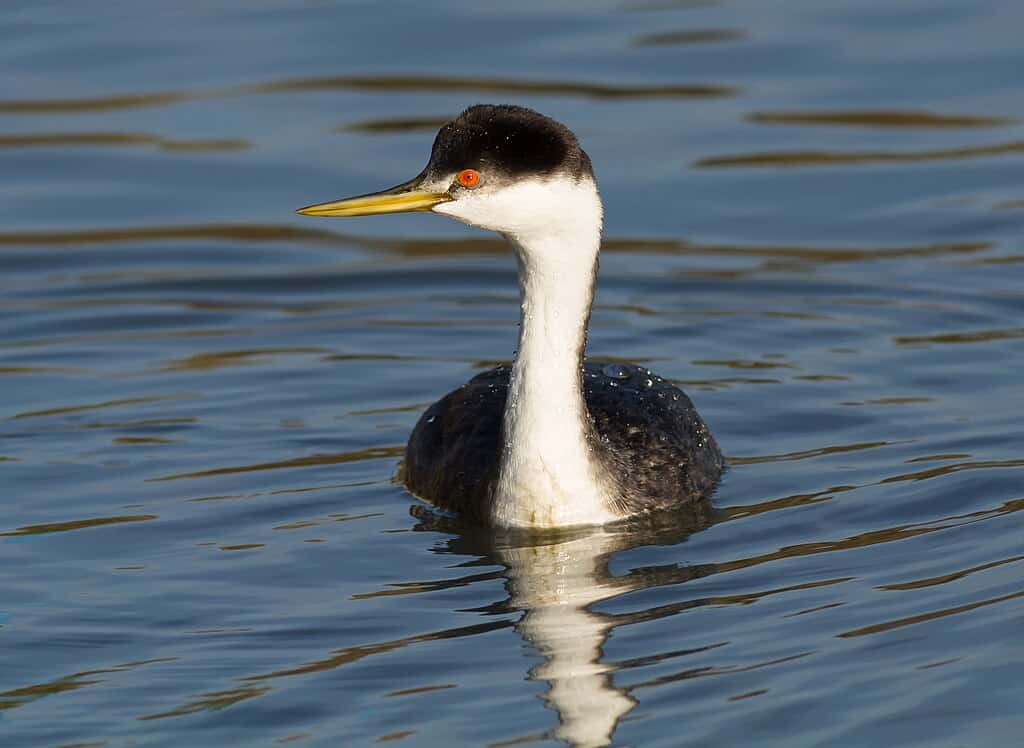
Along the lakes and marshes of western North America, Western Grebes (Aechmophorus occidentalis) perform one of the most synchronized courtship displays in the bird world. Their famous “rushing” ceremony begins with a pair of potential mates adopting an upright posture, their necks arched elegantly. After a series of coordinated head turns, both birds suddenly surge forward in perfect unison, their bodies lifted vertically above the water’s surface. They literally run across the water, side by side, sometimes covering distances of 20 meters while maintaining precise synchronization. Their feet strike the water’s surface 15-20 times per second, creating a distinctive pattering sound. This aquatic dance requires remarkable strength and coordination, serving as a demonstration of the physical fitness required for rearing young. The dance concludes with both birds diving gracefully beneath the surface, often emerging with vegetation to present to each other—symbolic of their future nest-building cooperation.
Superb Bird-of-Paradise The Living Optical Illusion
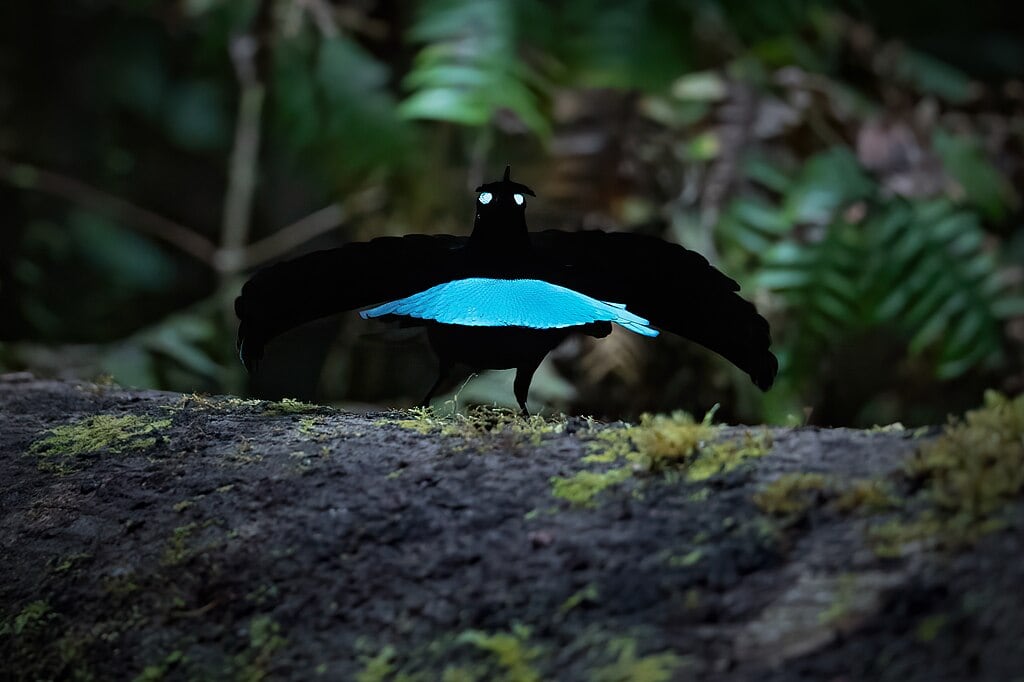
Perhaps no courtship display has captivated human imagination more than that of the Superb Bird-of-Paradise (Lophorina superba). This small, crow-sized bird from New Guinea transforms himself into a completely different shape during courtship. The male meticulously prepares his stage by clearing a small area of the forest floor before beginning his performance. When a female approaches, he unfurls his cape-like black feathers and raises an iridescent blue-green breast shield, effectively transforming into a bizarre, abstract shape often described as a “smiling face” or “black oval.” The transformation is so complete that the bird becomes almost unrecognizable as a bird. As he bounces and hops around the female, he produces sharp, mechanical clicking sounds while vibrating his feathers to create a hypnotic effect. The contrast between the velvety black of his plumage and the electric blue of his breast shield creates a spectacle so unusual that when Western scientists first saw preserved specimens, they believed the birds were manufactured fakes. Due to intense competition for females (with some estimates suggesting males outnumber females 20 to 1), only males with the most precise and energetic displays succeed in mating.
Blue-footed Booby The Charismatic Foot Flasher

The Blue-footed Booby (Sula nebouxii) transforms an apparent evolutionary quirk—bright blue feet—into the centerpiece of its courtship ritual. Found along the eastern Pacific coastlines from California to Peru, particularly in the Galápagos Islands, these seabirds perform a deceptively simple yet effective courtship dance. The male carefully lifts each bright blue foot high in an exaggerated march, reminiscent of a proud soldier on parade. The dance includes a ritualized “sky-pointing” where the male points his bill upward, spreads his wings, and whistles while emphasizing his prized feet. The intensity of the blue color directly correlates with the bird’s health and nutritional status, as the pigments responsible for the blue coloration come from carotenoids in their fish diet. Researchers have demonstrated that females can detect subtle differences in foot coloration, preferring males with the brightest blue feet as indicators of fishing prowess and genetic quality. The dance also includes gift-giving, where males present small sticks and stones to potential mates, demonstrating their nest-building capabilities.
Greater Prairie-Chicken The Booming Ground Dancers

The prairies of North America come alive each spring when Greater Prairie-Chickens (Tympanuchus cupido) engage in their ancient courtship displays. Males gather at traditional display grounds called leks, where they defend small territories only meters apart. The most distinctive feature of their performance involves the inflation of bright orange air sacs on the sides of their necks, which they use to produce deep, resonant “booming” sounds that can carry for over a mile across the grasslands. During display, males lower their heads, elevate their pinnae feathers (specialized neck feathers) to resemble horns, stamp their feet rapidly, and spin in place like wind-up toys. This dancing, combined with the haunting booms and cackles, creates an otherworldly landscape of sound and movement at dawn. The display isn’t merely visual—researchers have discovered that females can detect subtle variations in the booming sounds that indicate male health and vigor. Once numerous across North America’s grasslands, habitat loss has made this remarkable display increasingly rare, with some subspecies like the Heath Hen already extinct and others critically endangered.
Red-capped Manakin The Moonwalking Marvel
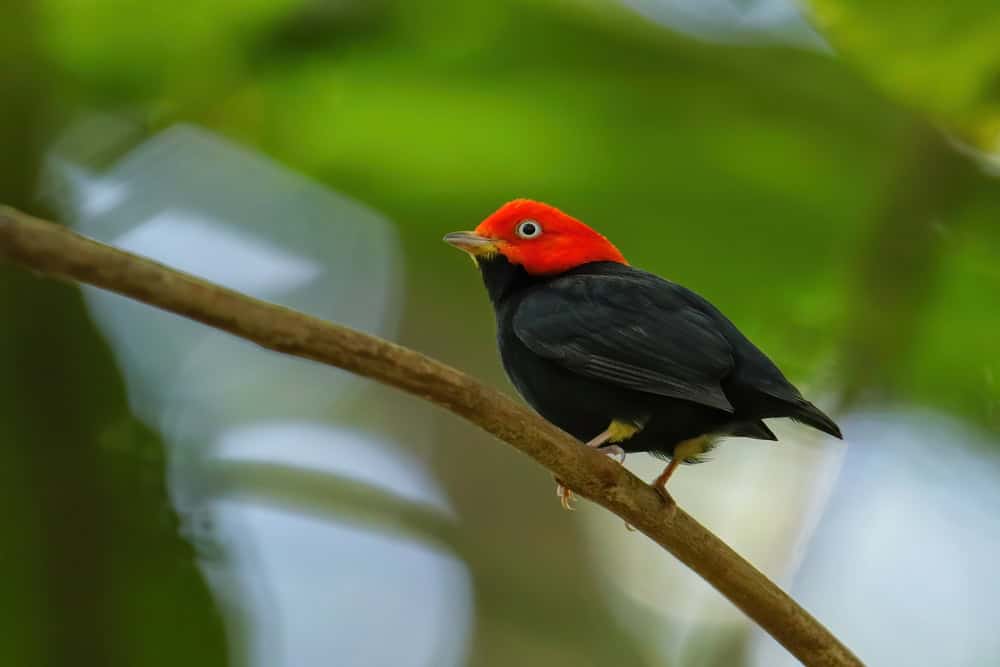
The Red-capped Manakin (Ceratopipra mentalis) of Central American rainforests has evolved one of the most remarkable courtship displays in the avian world—a dance that bears an uncanny resemblance to Michael Jackson’s moonwalk. At just 4 inches tall, these small black birds with brilliant red heads and yellow thighs perform on horizontal branches that serve as their dance floor. The male begins with rapid backward slides along the branch, defying gravity as his feet seem to glide effortlessly across the surface. He punctuates these movements with sudden backward hops and lightning-fast wing movements that produce mechanical, firecracker-like sounds. Most impressively, the wings create these sounds through structural adaptations rather than vocalization—the bird’s wing feathers have evolved specifically for sound production. Males practice these complex movements for months before reaching sexual maturity, gradually perfecting their technique. They often dance in loose associations, with dominant males occupying prime display perches and younger males practicing nearby. Research has shown that females prefer males who perform with greater speed and precision, making this one of nature’s clearest examples of sexual selection driving the evolution of elaborate physical abilities.
Flamingo The Synchronized Mass Ballet

Flamingos (Phoenicopterus spp.) transform their shallow wetland habitats into stages for one of nature’s most elaborate group courtship displays. Unlike many birds where males alone perform, flamingo courtship involves hundreds or even thousands of birds of both sexes participating in synchronized group displays. These “nuptial dances” begin with the entire flock walking in tight formation, their necks extended upward. Suddenly, as if responding to an invisible conductor, the birds erupt into coordinated movements—head-flagging (quick turning of the head from side to side), wing salutes (extending the wings to display their vivid colors), and “twist-preening” where they twist their flexible necks to spread oil from their preen glands across their spectacular plumage. The most dramatic component involves the entire flock simultaneously running through shallow water with their wings partially extended, creating a breathtaking pink mosaic of movement. These mass displays serve to synchronize hormone production among the birds, ensuring that the entire colony breeds simultaneously. This reproductive synchrony is crucial for flamingos, as it reduces predation on eggs and chicks by overwhelming predators with too many potential targets at once.
Peacock The Evolutionary Masterpiece

The Indian Peafowl (Pavo cristatus) has become synonymous with extravagant courtship display, with the male peacock’s train representing perhaps the most recognized example of sexual selection in action. During courtship, a male unfurls his magnificent train, which can contain over 200 elongated feathers, each adorned with iridescent eyespots. Unlike static displays, the peacock’s performance is dynamic—he erects this feather fan into a shimmering semicircle before initiating a distinctive rattling of his train feathers called “train-rattling.” This vibration creates both visual and auditory components to the display, with the feathers producing a low-frequency sound that females can detect from significant distances. Most remarkably, recent research has discovered that the eyespots on the train feathers contain nanostructures that reflect light in ways that create colors beyond what pigments alone could produce. These specialized feathers can reflect different colors depending on the viewing angle, creating a mesmerizing, almost hypnotic effect. Contrary to earlier beliefs, studies have shown that females don’t simply select males with more eyespots but rather assess the symmetry and vibrational qualities of the display, suggesting they’re evaluating neuromuscular coordination and overall health.
Sharp-tailed Grouse The Stomping Ground Competitors
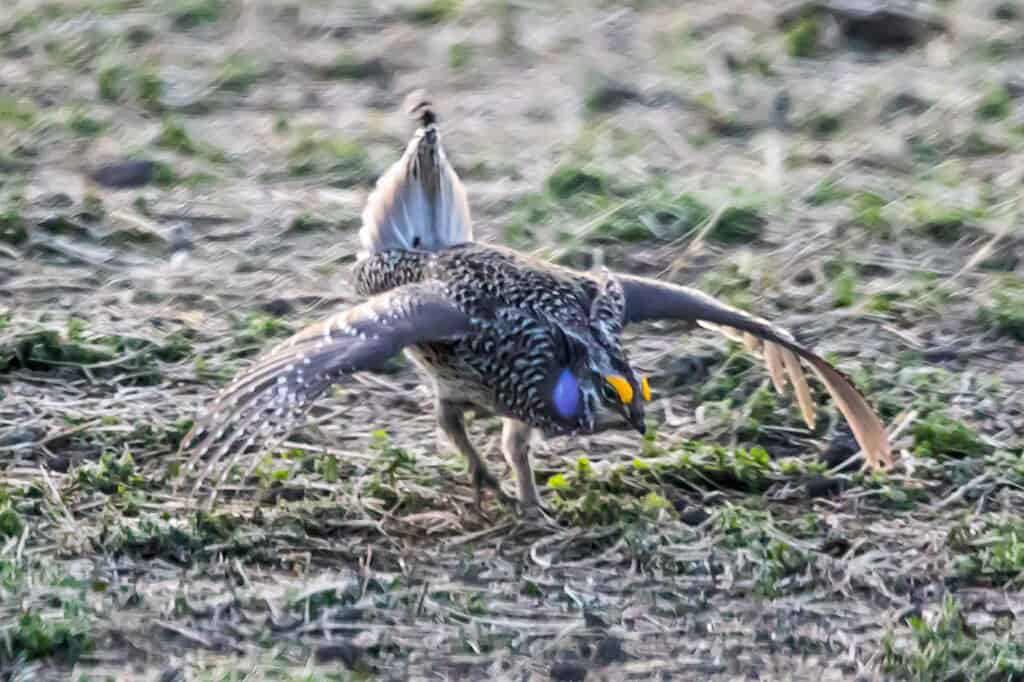
Each spring across the northern plains of North America, male Sharp-tailed Grouse (Tympanuchus phasianellus) gather at traditional dancing grounds called leks to perform one of nature’s most energetic courtship displays. Males claim small territories within the lek where they perform a dance that combines rapid foot-stomping with intricate posturing. The dance begins with males lowering their heads, extending their wings horizontally, and elevating their pointed tail feathers vertically. They then inflate purple air sacs on the sides of their necks while beginning a frenzied foot-stomping routine, during which their feet can strike the ground more than 20 times per second—creating a unique drumming sound that resonates across the prairie. As the intensity builds, males spin in tight circles while producing cooing vocalizations that complement their visual display. The most remarkable aspect is the cooperative nature of these leks—while males compete intensely for central positions, the collective display actually attracts more females than individual performances would. Radio-tracking studies have shown that females may visit several different leks before making their choice, with only about 10% of males typically securing 90% of all matings.
Crested Auklet The Synchronized Head-Swinging Ritual
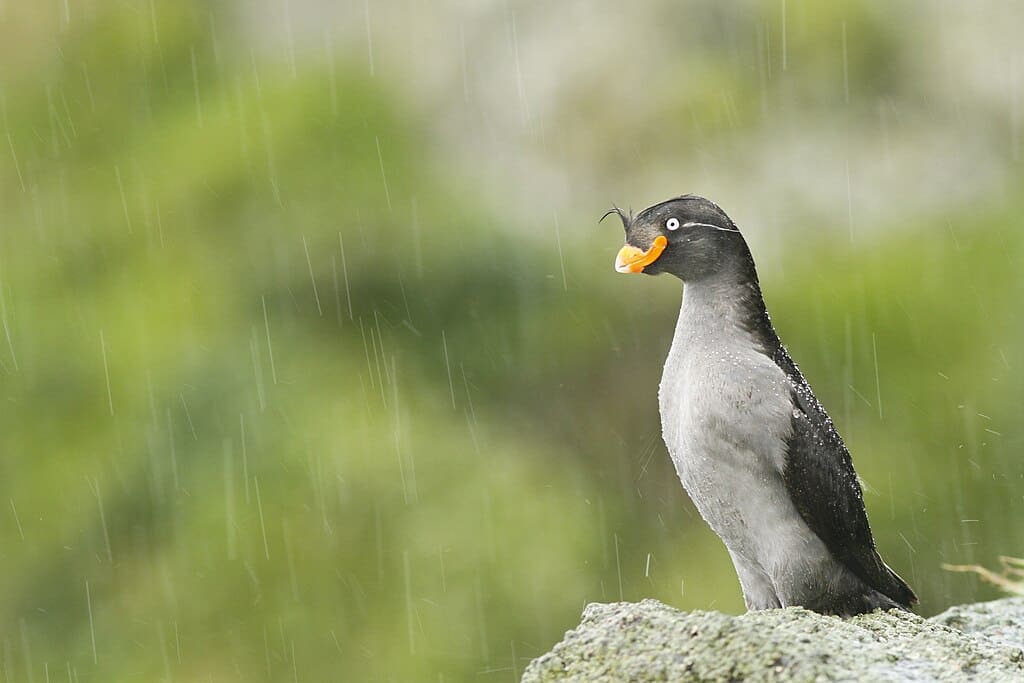
In the frigid waters of the Bering Sea and North Pacific, Crested Auklets (Aethia cristatella) perform courtship displays that seamlessly blend visual, auditory, and olfactory elements. These small seabirds, distinctive for the forward-curving crest of feathers on their foreheads, gather in dense colonies on rocky cliffs where potential mates engage in an elaborate “ruff-sniff” display. The ritual begins with a pair standing face-to-face, their posture erect and formal. They then synchronize their movements in a mesmerizing side-to-side head-swinging motion, gradually bringing their bills closer together while producing soft rhythmic vocalizations. The climax of this display involves the birds gently intertwining their necks and rubbing their bills through each other’s nape feathers, where specialized scent glands produce a distinctive tangerine-like aroma during breeding season. This scent serves multiple purposes—it attracts potential mates and may also function as a natural insect repellent that protects both adults and eventual chicks from parasites. Research has shown that the complexity of the crest (which grows larger each year) serves as an honest indicator of age and experience, with females typically preferring males with larger, more symmetrical crests.
Clark’s Grebe The “Weed Ceremony” Specialists

The Clark’s Grebe (Aechmophorus clarkii), close relative to the Western Grebe, performs one of the most synchronized and romantic courtship displays in the avian world. Found on the lakes of western North America, these elegant waterbirds engage in a multiphase courtship ritual that culminates in their famous “weed ceremony.” The display begins with the “advertising posture,” where potential mates swim with necks stretched upward before transitioning to synchronized head-turning, where pairs mirror each other’s movements with remarkable precision. This progresses to the spectacular “rushing” display where both birds sprint across the water’s surface in perfect unison, their bodies lifted vertically with only their rapidly paddling feet touching the water. The most intimate phase follows with the “weed ceremony”—both birds dive simultaneously, collect vegetation from the lake bottom, and then rise breast-to-breast in a vertical position, their bodies almost completely out of water. With necks arched gracefully, they present their gathered weeds to each other while rotating in a slow, balletic circle. Research has demonstrated that these highly synchronized behaviors establish and strengthen pair bonds, with pairs who display greater synchrony typically experiencing higher reproductive success.
Greater Sage-Grouse The Inflatable Pouch Performers
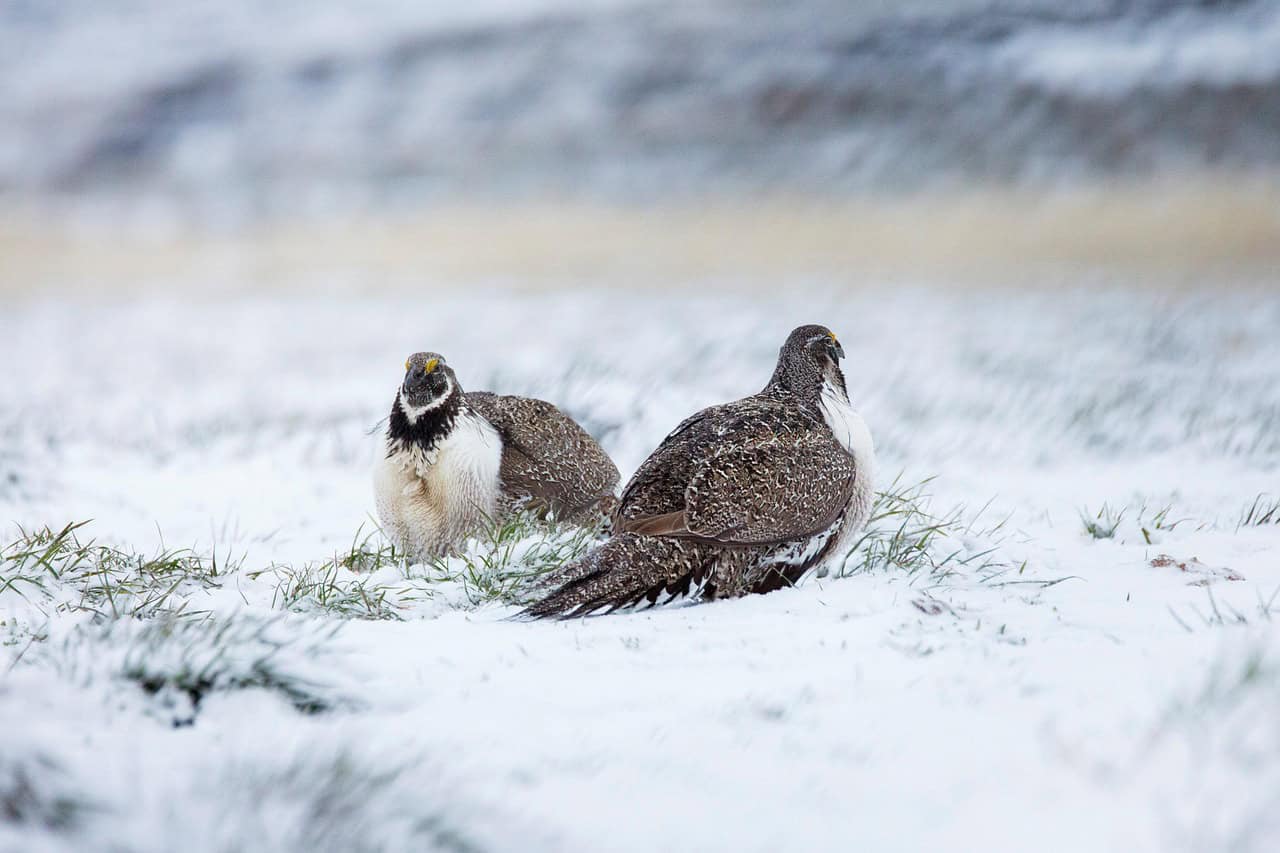
The sagebrush landscapes of western North America transform into natural amphitheaters each spring when male Greater Sage-Grouse (Centrocercus urophasianus) perform their extraordinary courtship displays. These chicken-sized birds gather at traditional display grounds called leks, where dozens of males compete for the attention of visiting females. The centerpiece of their display involves two specialized yellow air sacs hidden beneath white chest feathers, which males inflate to create balloon-like structures visible from over a mile away. During the display, males fan their spiky tail feathers, spread their wings low to the ground, and strut forward while rhythmically swishing their specialized chest feathers across their inflated air sacs. This creates a distinctive “swish-swish-coo-OOP-poink” sound sequence that resonates across the landscape, especially in the still dawn air. The most dominant males occupy central territories within the lek, with research showing that these prime positions may be held by the same individuals for several consecutive years. Female sage-grouse are exceptionally selective, with typically fewer than 10% of males securing 80% of all mating opportunities—one of the most skewed mating systems known in vertebrates. Sadly, habitat fragmentation and development have caused sage-grouse populations to decline by more than 90% from historical levels, making this remarkable display increasingly rare.
Mute Swan The Synchronized Heart Formation
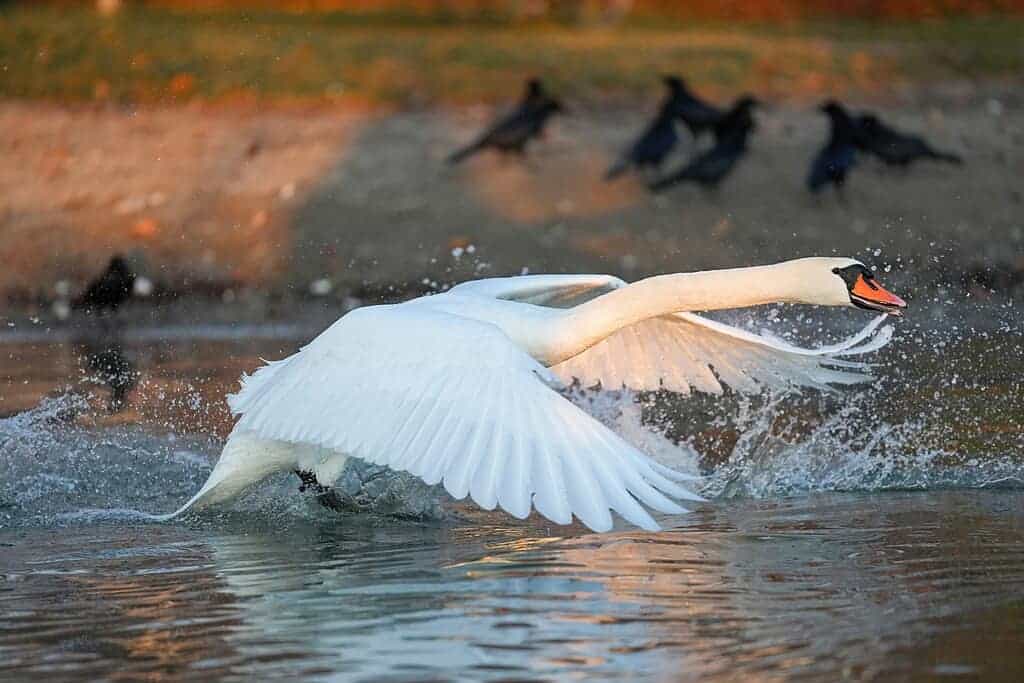
Despite their name, Mute Swans (Cygnus olor) create one of nature’s most visually poetic courtship displays. These large, elegant waterbirds engage in a courtship ritual that culminates in the formation of a heart shape between potential mates. The display begins with an elegant water ballet, where both birds swim parallel to each other while performing synchronized head-bobbing movements. As the intensity increases, both swans begin to face each other and extend their necks upward in perfect symmetry. The most distinctive phase occurs when they bring their bills together and simultaneously curve their necks toward each other, creating a perfect heart shape between their necks and heads. This display is often accompanied by soft vocalizations that contradict their “mute” designation. Unlike many birds whose courtship is primarily performed by males, swan courtship is mutual, with both sexes actively participating in the choreography. This reflects their lifelong monogamous relationships, which are among the strongest pair bonds in the avian world. Research has shown that these displays strengthen neurological and hormonal connections between pairs, with established couples performing abbreviated versions of these displays throughout the year to maintain their bond.
Conclusion: Nature’s Choreographed Masterpieces
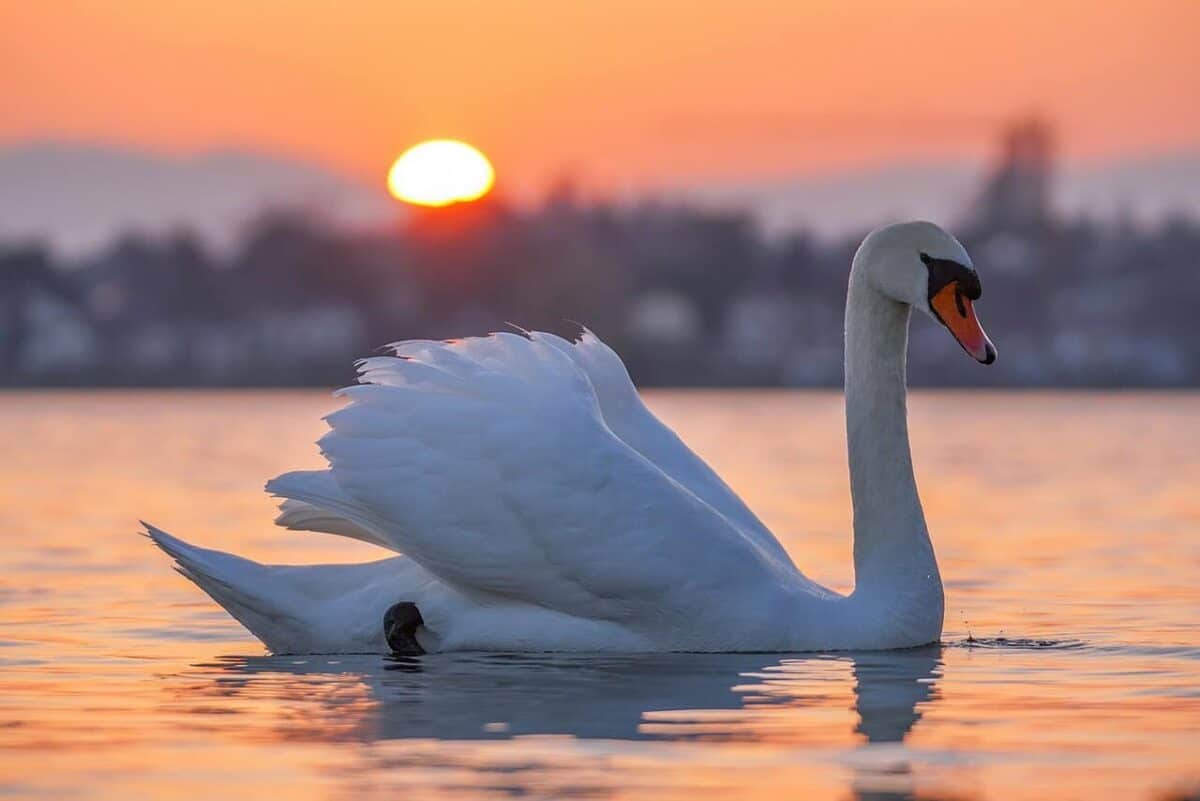
The spectacular courtship dances featured in this article represent some of the most extraordinary examples of sexual selection in the natural world. These elaborate performances have evolved over millions of years, shaped by female choice and male competition into increasingly complex and beautiful displays. Beyond their aesthetic appeal to human observers, these dances serve crucial biological functions—they demonstrate physical fitness, genetic quality, and the absence of parasites to potential mates. The
- 13 Wild Babies That Are Born Ready to Run - August 16, 2025
- 12 Wild Creatures That Can Regrow Entire Limbs - August 16, 2025
- How Do Whales Communicate Across Thousands of Miles? - August 16, 2025

